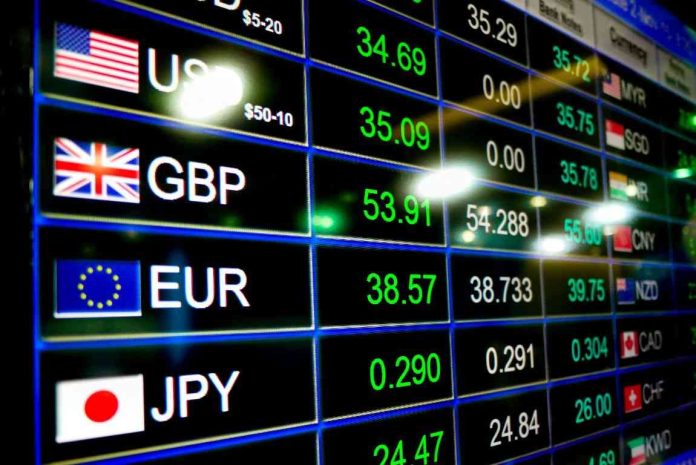Forex trading can be daunting, especially if you’re just beginning your journey. You may feel overwhelmed, fearful, and confused, or even make costly mistakes. This guide is here to offer you clear, practical insights to help guide your trading endeavours.
Getting started with Forex trading involves understanding its basics and learning to devise effective strategies. As you delve into the subsequent sections, you’ll gain confidence, replacing hesitation with the strategic action required for a successful dive into the foreign exchange market.
Table of Contents
Understanding Forex trading
Forex, or foreign exchange, trading involves buying one currency while selling another. This exchange determines the value of a currency relative to another, a value you’ll see reflected in Forex quotes.
The Forex market outpaces even the stock market as the world’s largest financial market. Each day, it sees a massive USD$6.6 trillion exchanged.
Speaking of participants, the Forex market isn’t just for individuals. There are diverse players, including central banks, financial institutions, corporations, and retail traders like you.
Currencies are always quoted in pairs, like EUR/USD or GBP/JPY. The first currency listed is the ‘base currency,’ while the second is the ‘quote currency.’ The exchange rate tells you how much of the quoted currency you’ll need to buy one unit of the base currency. For instance, if the EUR/USD rate is 1.20, you’ll need USD$1.20 to buy EUR€1.00.
Getting started with Forex trading
As you embark on your Forex trading journey, choosing the right broker is the first step. Reliable brokers, like CMC Markets or others, are trustworthy, offer competitive spreads, and have a user-friendly platform. Don’t forget to check their regulatory status, as a regulated broker offers more security for your trading capital.
Before diving into live trading, consider setting up a demo account. This allows you to practice trading with virtual money, providing a safe space to learn and experiment without financial risk.
When you’re ready to make your first real trade, start small. Be patient and disciplined, sticking to your trading plan.

The dynamics of the Forex market
Unlike stock markets, which operate on set hours, the Forex market is open 24 hours a day, five days a week. This is due to the market’s global nature, with trading taking place in different time zones. The market works through a network of banks rather than a centralized exchange, further increasing its accessibility.
The Forex market, like any other, isn’t immune to external influences. Factors such as economic indicators, geopolitical events, and even natural disasters can cause fluctuations in currency values. It’s crucial to stay updated with these factors to anticipate potential market shifts.
Understanding market sessions in Forex trading is also vital. The market operates in four major trading sessions: Sydney, Tokyo, London, and New York. These sessions overlap, leading to periods of increased market activity and volatility, presenting both opportunities and challenges.
Risks and challenges in Forex trading
Forex trading, while offering potential profits, isn’t without its risks. A critical risk is the market’s high volatility, which can lead to significant losses. There’s also the risk of over-leveraging, where traders use borrowed funds to increase their trading position, amplifying potential losses.
According to a US Securities and Exchange Commission study, 70% of Forex traders typically lose money every quarter. Furthermore, traders often deplete their entire trading funds within a year.
Traders often face pitfalls, such as emotional decision-making, lack of a strategic trading plan, or insufficient understanding of the market’s dynamics. They might also grapple with the fear of loss or the greed for more gains, both of which can derail successful trading.
To mitigate these risks and challenges, a well-thought-out trading plan that includes your risk tolerance, investment goals, and exit strategy is crucial.
Essential strategies for successful Forex trading
Strategies are crucial to success in Forex trading, and it all begins with a solid trading plan. It should detail your financial goals, risk tolerance, and specific criteria for entering and exiting trades. Sticking to your plan is crucial, as deviating can lead to uncalculated risks and losses.
Consider the two types of market analysis: fundamental and technical. Fundamental analysis involves assessing a country’s economic indicators, like inflation rates or political stability, to predict currency value changes. On the other hand, technical analysis uses past market data, primarily price and volume, to identify patterns and predict future movements. Both are vital tools that can help you make informed trading decisions.
Lastly, never underestimate the power of risk management. Knowing how much you’re willing to risk and limiting your losses through stop-loss and limit orders, among others, is essential. Diversifying your portfolio and regularly reviewing your trading performance can also aid in effective risk management.
Conclusion
Understanding the Forex market is vital before diving in. Use the insights from this article as your compass, steering you away from common pitfalls and toward successful trading.
Don’t rush into trading with real money. A demo account lets you dip your toes in the market without getting burnt. Practice there until you feel ready. This approach not only mitigates risks but also enhances your learning experience.
Lastly, always stay curious and eager to learn. The Forex market is ever-changing. Adaptability is vital to your success. Don’t be afraid of mistakes, as they’re valuable learning opportunities. Be patient, stay committed, and you’ll be well on your way to becoming a proficient Forex trader.














